14 Vendor Management Best Practices For Businesses
Effective management of suppliers is more than just a procurement function-its about building customer-supplier strategic partnerships that create value, mitigate risks, and drive business growth across industries.
A win-win partnership between buyers and suppliers can translate to better outcomes.
That's why regardless of size or industry; organizations must utilize vendor management best practices to make profits and minimize potential risks in Contract Lifecycle Management (CLM). Firms must stretch a little beyond the usual to provide improved experience and results for every stakeholder in the procurement process-from vendor discovery to contract negotiation to compliance management.
Whether they are vendors of services or wholesale suppliers, effective vendor relationships require constant effort from organizations. But the definition of vendor management differs in every business, and depending on size or need, they may face a few issues in the process.
In this blog, we will glance briefly at the common vendor management pain points, and then go deeply into 14 best practices for vendor management that businesses can adopt.
Start Strong: Foundation for Effective Vendor Management
You need to have a strong foundation before you set up a high-performing vendor ecosystem. Without that, even best practices later on will not work.
Common Vendor Management Issues
Here are universal issues organisations experience when dealing with multiple vendors:
- Vendor Selection: The incorrect supplier can postpone operations, reduce quality or induce delays. Ambiguous business and technical specifications make it hard to gauge.
- Performance & Quality Control: Even reputable vendors should be kept in check. Without ongoing workflow and reporting, you can have inconsistent performance between teams.
- Communication & Collaboration: With communication only through spreadsheets, email or phone, the collaboration gets isolated, leading to misunderstandings or delays.
- Contract Management: Coordinating multiple vendor contracts-templates, deadlines, payment terms-without a centralized system court danger of dispute, missed terms and legal problems.
- Vendor Dependency & Risk: Over-dependent on one vendor, you open yourself up to disruption of your supply chain, price volatility or capacity constraints.
- Vendor Compliance: Keeping that third parties are compliant with industry standards, regulations and internal processes is an ongoing task that needs to be closely monitored.
- Data Security & Confidentiality: If vendors have access to sensitive customer or business information, the potential for loss, misuse or breach is present unless you implement solid controls.
- Scalability & Flexibility: Bringing onboard new vendors, bringing them onboard and handling workflow is heavy on resources as business grows without sound systems.
- Vendor Relationship Management: Handling multiple vendor relationships means more points of communication, more complexity and more chance of a breakdown in cooperation.
- Cost Management: Handling vendor cost, getting transparency and negotiating competitive terms become progressively harder as the vendor portfolio bulks up.
Successful overcoming of such problems requires a planned and proactive approach to managing vendors.
Best Practice 1: Efficient Vendor Selection
Step one is the selection of a proper supplier or service vendor. It's not low cost-just alignment and viability.
- Define precisely your business requirements: product spec, scope of service, quality standard, delivery timeline.
- Create an evaluation matrix or scoring system by which to objectively evaluate vendors on criteria like capability, reliability, and financial health.
- Good research: validate references, financial stability, prior project experience, on-site visits where appropriate.
- Comparison shop a few vendors: don't hire the initial "yes" person. Go look around to make an informed decision.
- Set the priority of long-term fit: select a vendor that can develop with you, not simply satisfy short-term requirement.
Best Practice 2: Clearly Defined Expectations
Once a vendor is selected, set early and clearly define expectations.
- Carry out a well-drafted Statement of Work (SOW) or contract with scope, deliverables, timeline, quality specifications, services or goods.
- Include in the vendor contract pricing, payment terms, intellectual property rights, confidentiality, performance conditions.
- In more complex requirements, publish a Request for Proposal (RFP) to receive detailed vendor proposals with pricing, delivery schedule, implementation methodologies.
- Clearly outline roles and responsibilities and performance measures so both sides know what success will look like.
Building and Maintaining the Relationship
Cooperation with vendors does not stop with the contract signature. This section discusses how to build and maintain vendor relationships to deliver long-term value.
Best Practice 3: Monitor Vendor Performance Metrics
You must monitor your vendors' performance and how they meet your needs.
- Choose strategic performance measures (KPIs) such as on-time delivery, quality percentage, response time, terms of contract adherence.
- Set achievable targets for every metric that is operational in alignment with your business goals.
- Collect data from progress reports, internal team or end-user feedback, customer satisfaction surveys.
- Periodically compare performance against the KPIs and target benchmarks so as to identify trends and problems in a timely manner.
Tracking so designed allows you to keep suppliers under control and identify areas for improvement.
Best Practice 4: Regular Communication
Open, honest, partner relationship building is imperative.
- Keep on schedule with regularly scheduled meetings, check-ins or status reports with key vendors to keep everyone moving in the same direction.
- Establish two-way communication: vendor must know what you want; you must hear vendor's suggestions and concerns.
- Engage vendors in decision-making or problem-solving where relevant to encourage commitment and cooperation.
- Document key communications, decisions and action items so that there is a record of what has been agreed and what needs to be done.
Best Practice 5: Vendor Relationship Management Strategy
Key vendors should be managed as far greater than mere simple suppliers, but rather as key partners.
- Define vendor management governance structure: roles and responsibilities and escalation process.
- Involve vendors in innovation workshops, joint planning or continuous improvement discussion.
- Study the vendor relationship life cycle: onboarding, performance, strategic review, renewal/exit.
- Create trust among parties based on common goals, transparency and mutual success metrics agreed upon.
Best Practice 6: Contract Management Solution
The contracts keep the partnership intact-but there must be discipline in managing them and right systems.
- Store vendor contracts, changes, major milestones, contract obligations within a contract management system (or database).
- Track contract-specific KPIs (e.g., SLAs, renewal dates, termination clauses) to keep vendors on their toes.
- Display future deadlines, milestones, payment terms and offer visibility across teams.
- Proper contract management prevents you from missing terms, repeating expirations, or exposure to liability.
Scaling, Risk Management & Continuous Improvement
While you scale your business, your vendor management must also scale along with it. This stage is all about practices that will maintain you agile, decrease risk and optimize performance in the long term.
Best Practice 7: Risk Management
Any vendor relationship carries risk-financial, operational, reputational, compliance. You must manage these risks upfront.
- Identify and examine vendor risks: financial exposure, security risk, supply chain disruption, regulatory compliance.
- Risk categorization and importance-strategic or critical vendors will most probably need more stringent controls and monitoring.
- Incorporate contingency planning into vendor contracts: termination procedures, replacement vendors, transition strategies for services.
- Review your risk management plan regularly as business conditions evolve.
Best Practice 8: Regular Audits
Routine audits help ensure vendors are performing to standards and by contracts.
- Set audit criteria: data protection, rule compliance, business practices, financial health.
- Conduct audits periodically and include findings in reports to report to stakeholders.
- Use audit findings to identify areas for improvement, improve risk and streamline vendor management.
- Educate findings and remediation with vendors to keep them in line with your needs.
Best Practice 9: Automate Vendor Management Processes
Technology and automation can streamline and make vendor management more transparent by keeping things simple.
- Automate document submissions, approvals and reminders on contracts via a vendor management platform.
- Automate compliance monitoring: vendor certifications, industry requirements, internal policy compliance.
- Use data-driven tools to track vendors' performance, report, and detect problems early.
- Avoiding manual effort enables your staff to interact more strategically with vendors, rather than administratively.
Best Practice 10: Vendor Diversity and Redundancy
Relying on a single vendor is a risk. Alternatives and diversity offer redundancy.
- Build a diversified base of vendors to prevent single‐vendor dependence and capitalize on competitive prices.
- Have backup vendors for major goods/services so that when one cannot be used, the other can be used as a substitute.
- Use more than one vendor in a bid to receive good prices, shop around and possess bargaining power.
- Develop transition plans and backup plans if an immediate change of vendors is necessary.
Best Practice 11: Performance-Based Contracts
Making vendor pay or incentives contingent upon performance can provide enhanced results.
- Establish vendor contracts that relate payment or incentives to quantifiable outcomes: on-time delivery, quality, customer satisfaction, cost savings.
- Identify performance measurements that are specific, relevant, time-bound and aligned with your business objectives.
- Track frequently and provide results feedback to vendors-this guarantees ongoing improvement.
- Results-driven approaches shift from "doing the work" to "delivering results."
Best Practice 12: Regular Contract Reviews and Renewals
Vendor contracts should never be "set and forget." They should be reviewed periodically to ensure they are current.
- Periodically review vendor contracts to see if they still respond to business requirements today, the business current market position and current performance results.
- Involve legal, procurement and operations personnel in reviewing contracts to determine how they could be enhanced.
- Negotiate terms on review and performance, modify service levels, repricing or ending as required.
- Current contracts bring your vendor relationships into alignment with your strategy.
Best Practice 13: Centralized System
One system for vendor and contract data improves visibility and control.
- Use one central repository to hold vendor data, contract documents, performance data, communications and compliance documents.
- One system breaks silos, improves decision making and offers real-time insights.
- With centralized information you're able to identify bottlenecks, identify high-risk suppliers, make faster decisions and act on change in advance.
- Most companies find manual spreadsheets insufficient once supplier portfolios expand; modern platforms provide a better platform.
Best Practice 14: Compliance Management
Having vendors adhere to laws, regulations and your internal policies keeps your business safe.
- Maintain ongoing monitoring of compliance: regulatory announcements, vendor certifications, internal policy compliance.
- Provide notification procedures to inform you about changes in vendor status, contract milestones, compliance matters.
- Obtain consequence clauses included in contracts for non-compliance: penalties, rights of termination, corrective action plans.
- Being ahead of compliance lowers legal, financial and reputational risk and enables vendor accountability.
Conclusion
By using these 14 best practices, your company can transform vendor relationships from transactional to strategic. Let's recap:
- Start right with selecting the right vendors and setting proper expectations.
- Build and maintain value by monitoring performance, communicating effectively, and contracting intelligently.
- Grow confidently by managing risk, automating, diversifying vendors, using outcome-based models, and mandating compliance.
Vendor management is not an event-it's a process. It takes rigorous planning, operations discipline, good relationships and proper technology. Properly implemented vendor management can provide better performance, lower costs, more flexibility, less risk and competitive advantage.
Ready to streamline your vendor management and bring your supplier relationships into the future?
Schedule a free demo with Dock 365's SharePoint-based vendor & contract management solution.
Let us help you centralize your vendor lifecycle, automate processes, and form partnerships that create true business value.
Book a Live demo
Schedule a live demo of Dock 365's Contract Management Software instantly.
.png?width=196&height=196&name=MicrosoftTeams-image%20(24).png)
Written by Deepti Gopimohan




